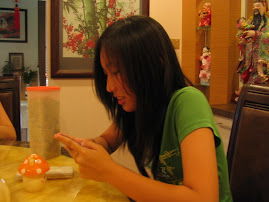The most common cobra is the Spectacled cobra Naja naja, native to the Indian subcontinent and associated with snake charming there. The Black cobra, found in Pakistan and North India, is generally considered to be a sub-species. The second most common cobra species is the Monocled cobra, Naja kaouthia, widespread in Asia.
In addition to a deadly bite, the Spitting cobra can incapacitate larger would-be predators by spraying venom into their eyes. This is extremely painful and can cause permanent blindness, but if washed out promptly rarely causes permanent damage.
The King cobra is ophiophagous i.e. it feeds almost entirely on other snakes, even venomous ones, although it sometimes preys on small rodents and birds. It will only attack humans if provoked or in other extreme circumstances that threaten its survival. If not treated, a king cobra's bite can kill a person in just half an hour. King Cobras may reach up to 5.2m (17.1ft) in length, making them the largest venomous snakes in the world.
In 2003, a new species of cobra was discovered at London Zoo in a shipment of illegal exotic pets. When zoo scientists thought they had a new species they brought in Dr. Wuster who confirmed their belief. Although bearing a resemblance to the Red Spitting Cobra DNA tests confirmed that it is in fact a new species altogether. Studies indicated that it originated from an area of Egypt and Sudan formerly known as Nubia. The new species, Naja nubiae or Nubian Spitting Cobra, has since bred at London Zoo.
Cobra venom
The snake will only attack a human if provoked or in other extreme circumstances which threaten its survival. Furthermore, for a dangerously venomous snake, the cobra's strikes are quite slow when compared to the extremely rapid strikes of such species as rattlesnakes. Additionally, not all bites result in envenomation and in the case of the Cobra the amount of "blank" strikes may be quite high: in one series of recorded bites in Malaysia only 55% of strikes have included envenomation. Cobra bites are fatal in about 10% of human cases. However, as with any venomous snake, any bite from a cobra should be treated as a potentially fatal injury and medical attention should be sought immediately after the bite occurs. As with all elapids, the venom of cobras is highly neurotoxic and dangerous. Therefore, any cobra bite must be regarded as life-threatening and professional medical assistance should be immediately sought. Early symptoms of a bite include ptosis, diplopia, dysphagia, and dizziness, followed by progressive respiratory muscle weakness, ultimately requiring endotracheal intubation. Cobra venom is a postsynaptic neurotoxin. It works by stopping the acetylcholine molecules in the diaphragm muscle from interacting. Without treatment death from respiratory failure may occur as early as 30 minutes after being bitten.
Standard treatment involves the use of antivenin. Additionally, it is possible to support bite victims via mechanical ventilation, using equipment of the type generally available at hospitals. Such support should be provided until the venom is metabolised and the victim can breathe unaided. If death occurs it takes place approximately 6 to 12 hours after the cobra bite. Cause of death is respiratory failure or suffocation caused by complete paralysis of the diaphragm.



1 comment:
Then primary Pataskala of any child is there house and his mother and then rest of other things. The Education means in it is an art and science whose learn any act or experience that has a formative effect on the mind, character or physical ability of an individual.
Post a Comment